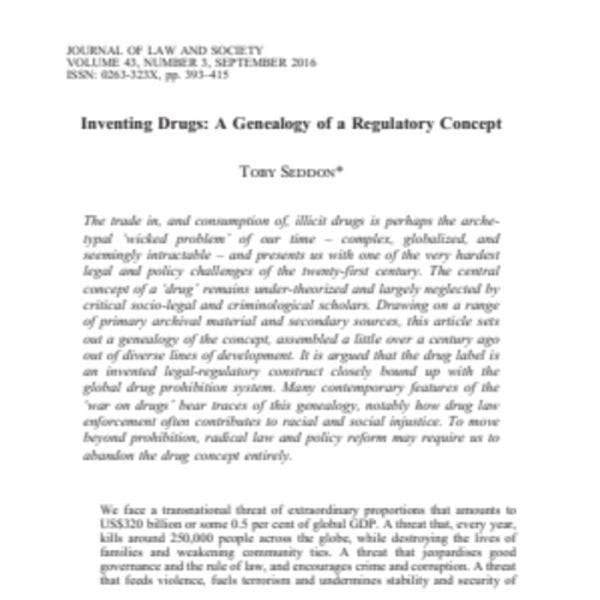Inventing drugs: A genealogy of a regulatory concept
“There are no drugs “in nature”,” Jacques Derrida once declared, “the concept of drugs is not a scientific concept, but is rather instituted on the basis of moral or political evaluation.”
In other words, to label a substance a “drug” is an evaluative rather than descriptive act, a form of decree which is usually “of a prohibitive nature”. Prior to, or outside of, these evaluations, there exist simply plants and chemicals whether naturally-occurring, processed or entirely synthetic which have a variety of properties when ingested by humans (poison, stimulant, sedative, nourishment, analgesic, hallucinogen, and so on).
The different labels we attach to them are human constructions, some of which are legal in character, some not. Contrary to much public and political discourse on the matter, these labels are not settled or universal but, rather, are historically and culturally contingent, that is, they change over time and vary from place to place. It is the historical contingency of the “drug” label that is the focus of this article.
The puzzle that is explored is highlighted by this observation from the late historian, Roy Porter: If you'd talked about the “drugs problem” two hundred years ago, no one would have known what you meant.
There was no notion then of “drugs”, in the sense of a small group of substances scientifically believed to be harmful because addictive or personality destroying, the availability of which is restricted by law.
The term “drugs” as a shorthand for a bunch of assorted narcotics is in fact a twentieth-century coinage: if you'd mentioned “drugs” to anyone in George III's time or in the Victorian era, they'd have thought you were referring to the remedies physicians prescribed and apothecaries made up.”
Keep up-to-date with drug policy developments by subscribing to the IDPC Monthly Alert.
